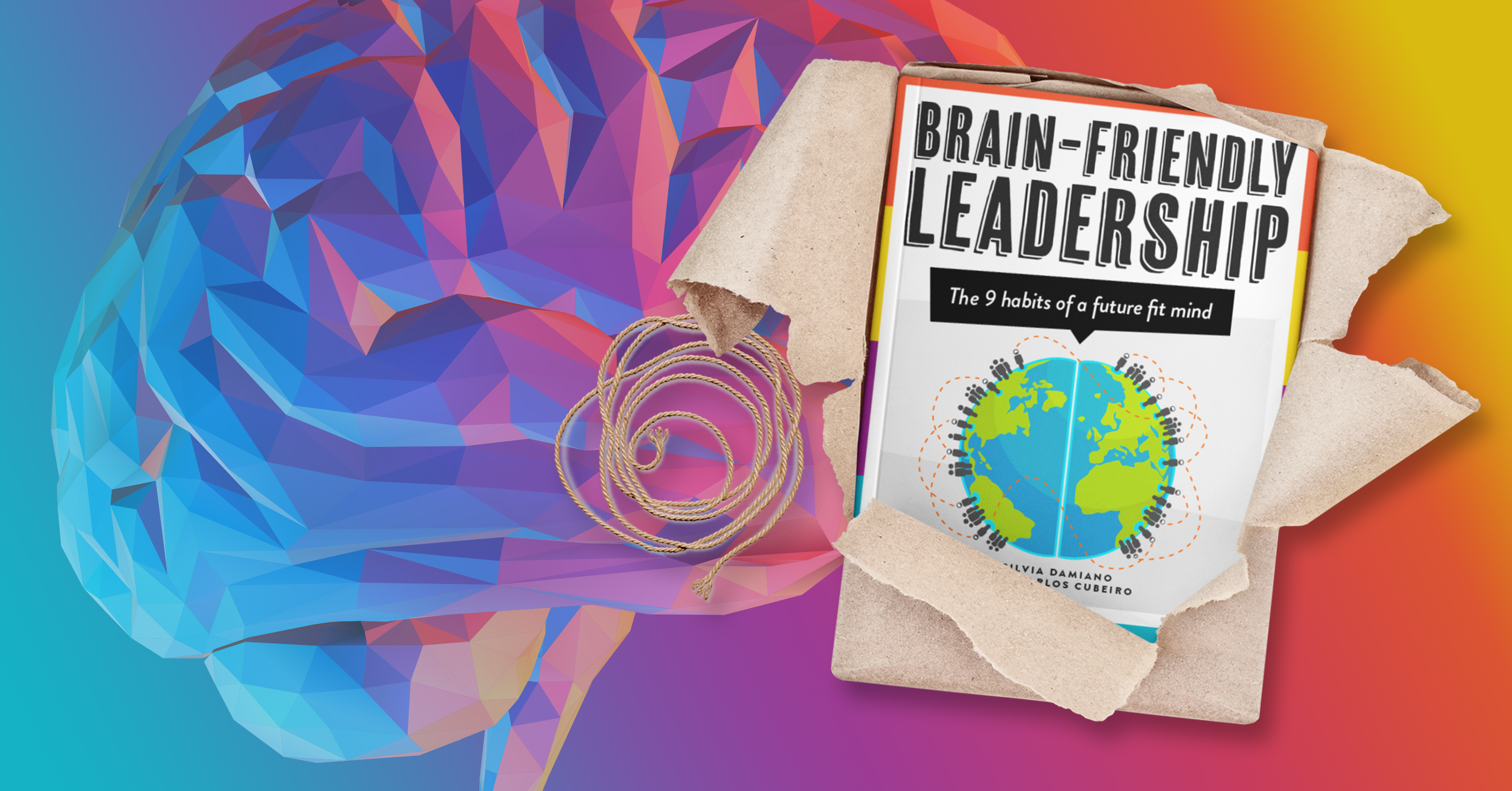Building AI With Heart: What The Future Could Look Like If We Led With Wisdom
This piece is written in the spirit of ethical inquiry and collective reflection. It is an invitation to deepen the dialogue around AI, leadership and the future of humanity.
In preparation for an upcoming conference in Sydney last month, where I was invited to present on how we can better prepare ourselves for the future of work, I found myself reflecting deeply on the intersection of AI, human values and leadership.
These reflections led me to write this post because I sense that what I’m feeling is something many others are quietly feeling too.
During the filming of the “Make Me A Leader” documentary some years ago, I had the privilege of engaging in a profound conversation with Grant Soosalu, co-creator of mBraining, a field that explores how the head, heart and gut each hold their own forms of intelligence. What struck me most wasn’t just the depth of his insight, but the urgency with which he was working to translate this understanding into the world of artificial intelligence.
Here is a short clip of Grant in our documentary 👇
At the time, Grant was collaborating with a researcher in the United States on a robotics project. His message back in 2016/2017 was simple but revolutionary:
Do not design robots based only on head-brain logic. Include the wisdom of the heart and the courage of the gut. - Grant Soosalu
He believed that true wisdom arises when these three intelligences work in harmony. Grant passed away in 2019, but his legacy endures.
His work continues to inspire a holistic approach to leadership, education and the design of future technologies.
This insight leads us to an important question:
What if AI had been designed by women and/or emotionally intelligent thinkers from the start?
Reimagining Intelligence: What If Women Had Designed AI First?
This thought led me to a deeper reflection: what if artificial intelligence had been shaped from the beginning by women or more broadly, by values often coded as feminine?
What if emotional intelligence, care and community were embedded in our foundational design principles, rather than added as ethical patches later?
If AI had been built with care and connection at its core, things would look very different. Instead of focusing only on speed and efficiency, we’d see tools designed to support mental health, caregiving and real human relationships.
Fairness and inclusivity wouldn’t be an afterthought; they’d be baked into the foundations, with attention to race, gender, language and consent. AI wouldn’t be trying to replace us, but work alongside us, like an empathetic co-pilot, not a competitor.
The design would feel more natural and intuitive, less cold or mechanical. It would fit into our lives rather than disrupt them. And we wouldn’t be measuring success by scale or profit, but by whether we’re actually reducing burnout, building trust and helping people feel more connected and well.
Is The Profit-Driven Model Breaking Innovation?
In many ways, this is exactly what we’re seeing play out in the innovation space today: a culture driven by speed rather than reflection and competition instead of collaboration. It’s a mindset that prioritises quick wins and market dominance over thoughtful, long-term impact, often leaving little room for ethics, empathy or collective benefit.
These values tend to override care, interdependence and long-term stewardship. The result? Fast, scalable solutions that often disregard emotional intelligence, ethics and even ecological consequences.
The alternative?
- Embodied, holistic education
- Co-creation with diverse voices
- Designing for purpose, not just profit
- Care and emotional intelligence at the core
A Refuge in New Zealand: Tech’s “Plan B” Is a Symptom of the Problem
In interviews and closed-door discussions at elite forums, tech moguls have reportedly shared their contingency plans in case of societal collapse, with New Zealand often named as a preferred destination.
What does it say about our leadership when the fallback plan isn’t to prevent catastrophe, but escape it?
This kind of thinking, however rational on the surface, reflects a deeper issue:
It’s self-preservation without collective preservation.
If the people building AI systems foresee their own creations contributing to collapse and their only backup plan is to save themselves, it shows that AI is being shaped by a culture driven by the head brain alone. Logic without empathy. Brilliance without belonging. It lacks the care of the heart.
How The Female Brain Shapes a Different Vision of the Future
Neuroscience research from Dr. Daniel Amen and others highlights key differences in female brain structure and function:
- Greater emotional nuance and empathy (limbic system)
- More cautious risk assessment (prefrontal cortex)
- Inter-hemispheric integration (corpus callosum)
These traits often translate into worldviews that are:
- Systemic and interconnected
- Focused on relationships and community wellbeing
- Regenerative, not just innovative
- Emotionally and ethically aware
Women tend to ask not only “What can we do?” but “What should we do?”
What Oprah’s Interview Didn’t Ask
In Oprah Winfrey’s recent interview with Sam Altman, we witnessed a rare and valuable moment of tech self-reflection. Altman spoke candidly about AI’s pace, its risks and the need for safety oversight.
But as I watched, I found myself asking: What if the conversation went further, not just into regulation or economic impact, but into the moral core of what it’s being created?
Not even those who deeply understand AI, like Mo Gawdat, former Chief Business Officer at Google X, have a clear answer to the conundrum we find ourselves in.
But as he poignantly puts it:
Despite the dark warning, the AI revolution could ultimately lead to a utopia. But the road to get there will be brutal and deeply misunderstood.
It was this tension that prompted me to imagine a different kind of dialogue. One rooted in human questions. The kinds of questions a parent, teacher or caregiver might ask.
Me: I come to this not as a professional, but as a mother. My children are growing up in a world where truth feels blurred and connection feels thin. Are we building AI that makes the world more human or less?
Tech Mogul: I think a lot about safety and alignment. But you’re raising something deeper.
Me: Are your teams asking what really matters? Are you designing not just for intelligence, but for empathy, for wisdom, for meaning?
Tech Mogul: It’s hard. We want to build something beneficial, but defining that isn’t simple.
Me: Then start with the questions children would ask. Start with love. Let mothers, teachers and caregivers guide your frameworks. Because in the end, intelligence without care is just calculation. And we deserve more.
Tech Mogul: That’s something I haven’t really thought about…
Me: One last thing. When something goes wrong, who takes responsibility? And if the answer is no one, what does that say about the moral framework behind it all? Would you still build that future if your own children had to live in it?
An Important Call To Action
To build truly ethical AI, we must integrate head, heart and gut, just as Grant Soosalu envisioned. We must include women, caregivers, creatives, elders and empaths in the room.
Not because ‘it’s nice’, but because it’s necessary.
To AI developers: Design with embodied intelligence. Consult caregivers, educators and mental health experts. Build for understanding, not just prediction.
To researchers: Study emotional cognition, intuition and moral reasoning. Help machines become not just smarter, but wiser.
To policymakers: Regulate for collective wellbeing. Embed emotional, cognitive and ethical safety into the core of your frameworks.
To all of us: Let’s stop racing toward artificial intelligence and start co-creating authentic intelligence.
With care, courage and conscience.
What You Can Do Next...
If this message resonated with you and you’re ready to lead with more care, clarity and consciousness…
Explore the i4 Neuroleader™ Certification Programs, where neuroscience, emotional intelligence and personal transformation come together to help you lead with your head, heart and gut.
You’ll learn to develop the inner capacities that tomorrow’s workplaces need most, self-awareness, adaptability, empathy and purpose-driven decision-making.
Because the future doesn’t need more speed.
It needs more wisdom.
And that starts with how we lead.
- i4 Neuroleader (353)
- Leadership & Culture (336)
- Brain Health & Wellbeing (206)
- Innovation (97)
- Performance (85)
- Our News (79)
- Collaboration (68)
- Agility (53)
- Practitioner Stories (44)
- In The Press (36)
- Make Me A Leader (33)
- Balance (31)
- Integration (30)
- Imagination (29)
- Awareness (23)
- Brain-Friendly Channel (22)
- Brain-Friendly Leadership (22)
- Communication (22)
- Curiosity (21)
- Inspiration (19)
- Intuition (19)
- Attitude (17)
- Courage (16)
- Adaptability (14)
- Case Studies (14)
- Drive (14)
- Generosity (13)
- Ethics (9)
- Mental Readiness (9)
- Influence (8)
- Retreat (8)
- Brain-Friendly Leadership (1)
- Oracle Cards (1)
- 1 November 2025 (2)
- 1 September 2025 (3)
- 1 August 2025 (5)
- 1 July 2025 (5)
- 1 June 2025 (2)
- 1 April 2025 (1)
- 1 March 2025 (8)
- 1 February 2025 (3)
- 1 September 2024 (4)
- 1 July 2024 (2)
- 1 June 2024 (6)
- 1 May 2024 (2)
- 1 April 2024 (3)
- 1 March 2024 (1)
- 1 November 2023 (1)
- 1 August 2023 (1)
- 1 July 2023 (2)
- 1 June 2023 (2)
- 1 May 2023 (4)
- 1 April 2023 (2)
- 1 March 2023 (7)
- 1 February 2023 (4)
- 1 January 2023 (1)
- 1 September 2022 (1)
- 1 May 2022 (3)
- 1 April 2022 (1)
- 1 March 2022 (5)
- 1 February 2022 (4)
- 1 January 2022 (4)
- 1 December 2021 (2)
- 1 November 2021 (4)
- 1 October 2021 (3)
- 1 September 2021 (6)
- 1 August 2021 (1)
- 1 April 2021 (1)
- 1 December 2020 (2)
- 1 November 2020 (1)
- 1 September 2020 (1)
- 1 August 2020 (1)
- 1 July 2020 (3)
- 1 June 2020 (4)
- 1 May 2020 (3)
- 1 April 2020 (4)
- 1 March 2020 (6)
- 1 February 2020 (4)
- 1 January 2020 (2)
- 1 December 2019 (3)
- 1 November 2019 (3)
- 1 October 2019 (5)
- 1 September 2019 (4)
- 1 August 2019 (4)
- 1 July 2019 (4)
- 1 June 2019 (5)
- 1 May 2019 (9)
- 1 April 2019 (9)
- 1 March 2019 (8)
- 1 February 2019 (7)
- 1 January 2019 (8)
- 1 December 2018 (5)
- 1 November 2018 (10)
- 1 October 2018 (16)
- 1 September 2018 (9)
- 1 August 2018 (10)
- 1 July 2018 (9)
- 1 June 2018 (8)
- 1 May 2018 (9)
- 1 April 2018 (9)
- 1 March 2018 (9)
- 1 February 2018 (8)
- 1 January 2018 (8)
- 1 December 2017 (6)
- 1 November 2017 (9)
- 1 October 2017 (9)
- 1 September 2017 (8)
- 1 August 2017 (10)
- 1 July 2017 (8)
- 1 June 2017 (8)
- 1 May 2017 (9)
- 1 April 2017 (8)
- 1 March 2017 (6)
- 1 January 2017 (3)
- 1 December 2016 (4)
- 1 November 2016 (5)
- 1 October 2016 (4)
- 1 September 2016 (2)
- 1 August 2016 (4)
- 1 July 2016 (4)
- 1 June 2016 (2)
- 1 May 2016 (3)
- 1 April 2016 (3)
- 1 March 2016 (7)
- 1 February 2016 (2)
- 1 January 2016 (5)
- 1 December 2015 (2)
- 1 November 2015 (2)
- 1 October 2015 (4)
- 1 September 2015 (2)
- 1 August 2015 (2)
- 1 July 2015 (1)
- 1 June 2015 (3)
- 1 May 2015 (4)
- 1 April 2015 (5)
- 1 March 2015 (3)
- 1 February 2015 (3)
- 1 January 2015 (3)
- 1 December 2014 (3)
- 1 November 2014 (3)
- 1 October 2014 (3)
- 1 September 2014 (5)
- 1 August 2014 (4)
- 1 July 2014 (5)
- 1 June 2014 (3)
- 1 May 2014 (1)
- 1 March 2014 (1)
- 1 December 2013 (2)
- 1 November 2013 (1)
- 1 July 2013 (1)
- 1 June 2013 (1)
- 1 May 2013 (3)
- 1 April 2013 (1)
- 1 March 2013 (2)
- 1 February 2013 (1)
- 1 January 2013 (2)
- 1 November 2012 (1)
- 1 October 2012 (1)
- 1 September 2012 (1)
- 1 August 2012 (2)
- 1 July 2012 (1)
- 1 June 2012 (1)
- 1 May 2012 (2)
- 1 April 2012 (1)
- 1 February 2012 (1)
- 1 January 2012 (1)
- 1 November 2011 (1)
- 1 October 2011 (3)
- 1 September 2011 (2)
- 1 July 2011 (1)
- 1 June 2011 (1)
- 1 May 2011 (1)
- 1 April 2011 (1)
- 1 March 2011 (1)
- 1 February 2011 (2)
- 1 January 2011 (4)
- 1 December 2010 (4)
- 1 November 2010 (3)
- 1 October 2010 (5)
- 1 September 2010 (4)
- 1 August 2010 (4)
- 1 July 2010 (3)
- 1 June 2010 (4)
- 1 May 2010 (7)
- 1 April 2010 (5)
Subscribe by email
You May Also Like
These Related Stories

Aligning Brain, Heart & Gut to Foster Agility

What is Brain-Friendly Leadership?




No Comments Yet
Let us know what you think